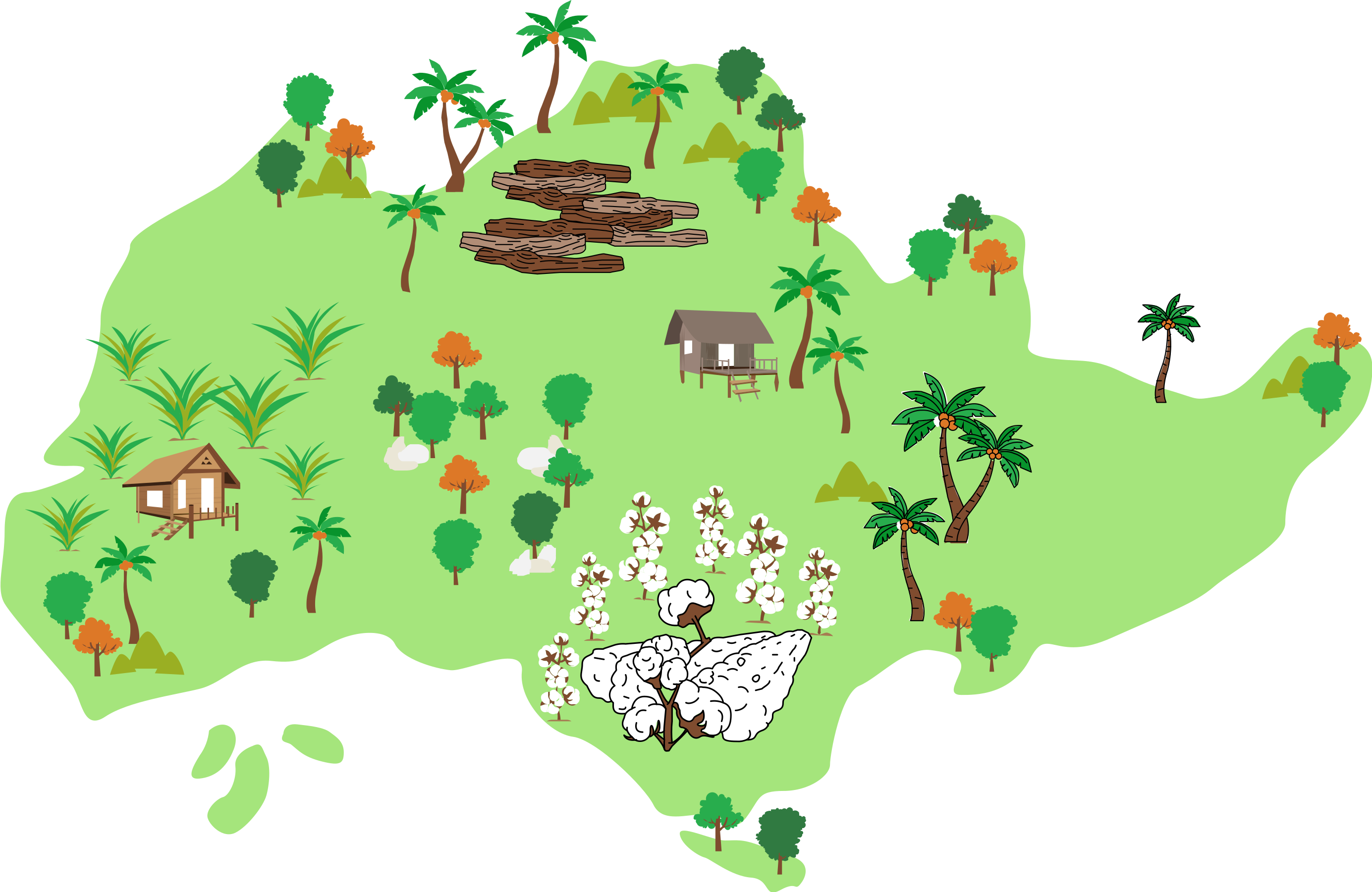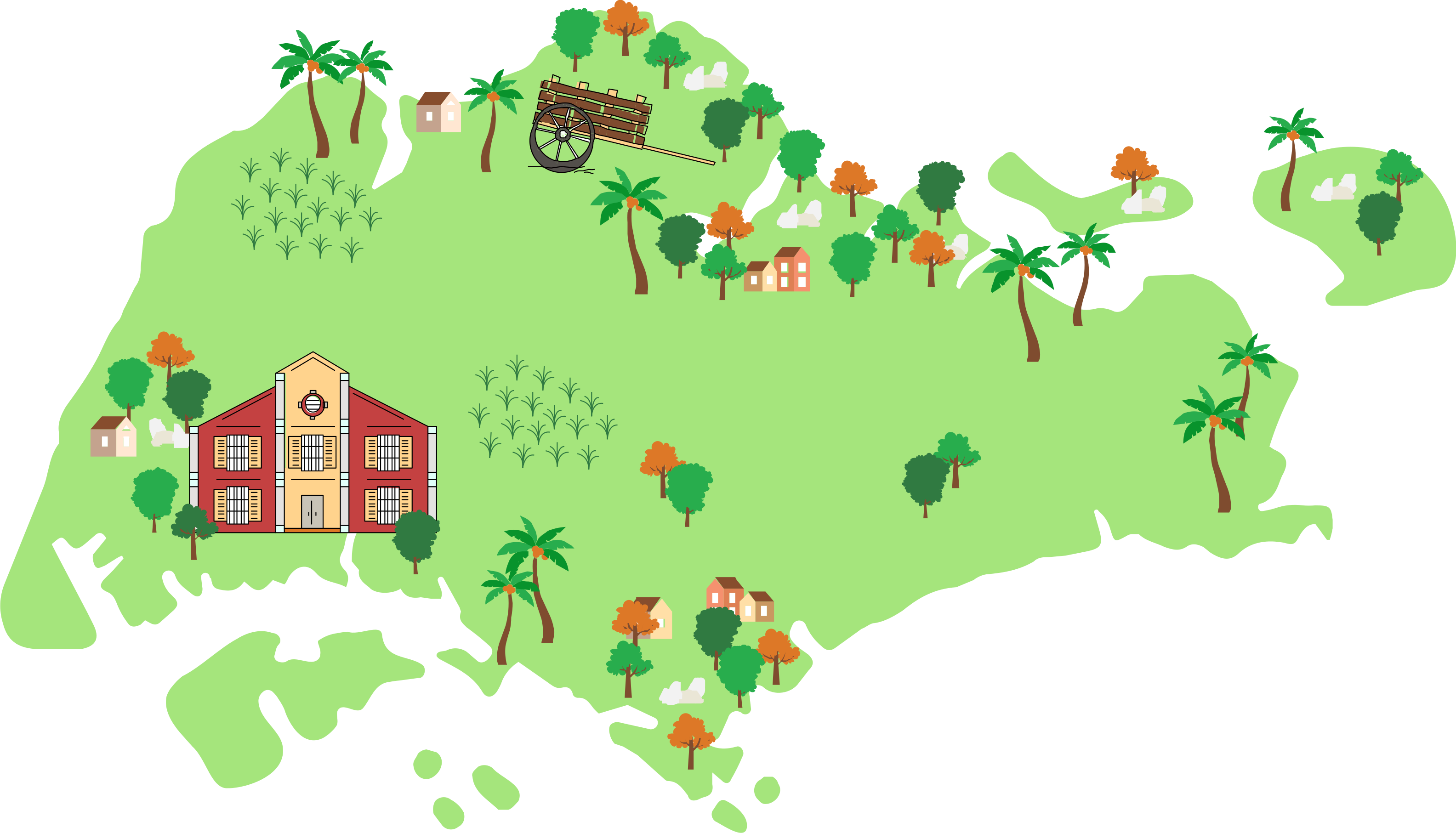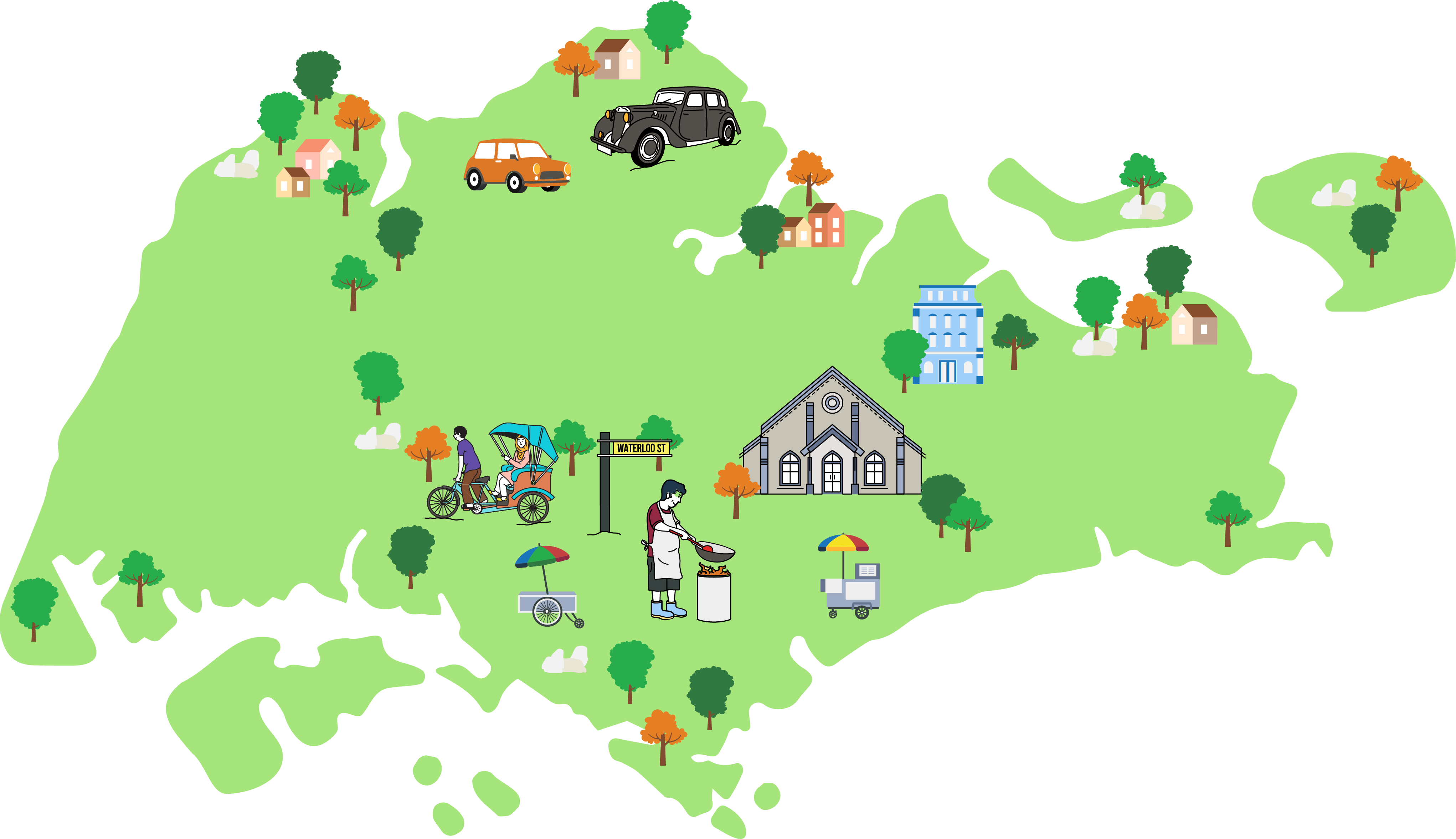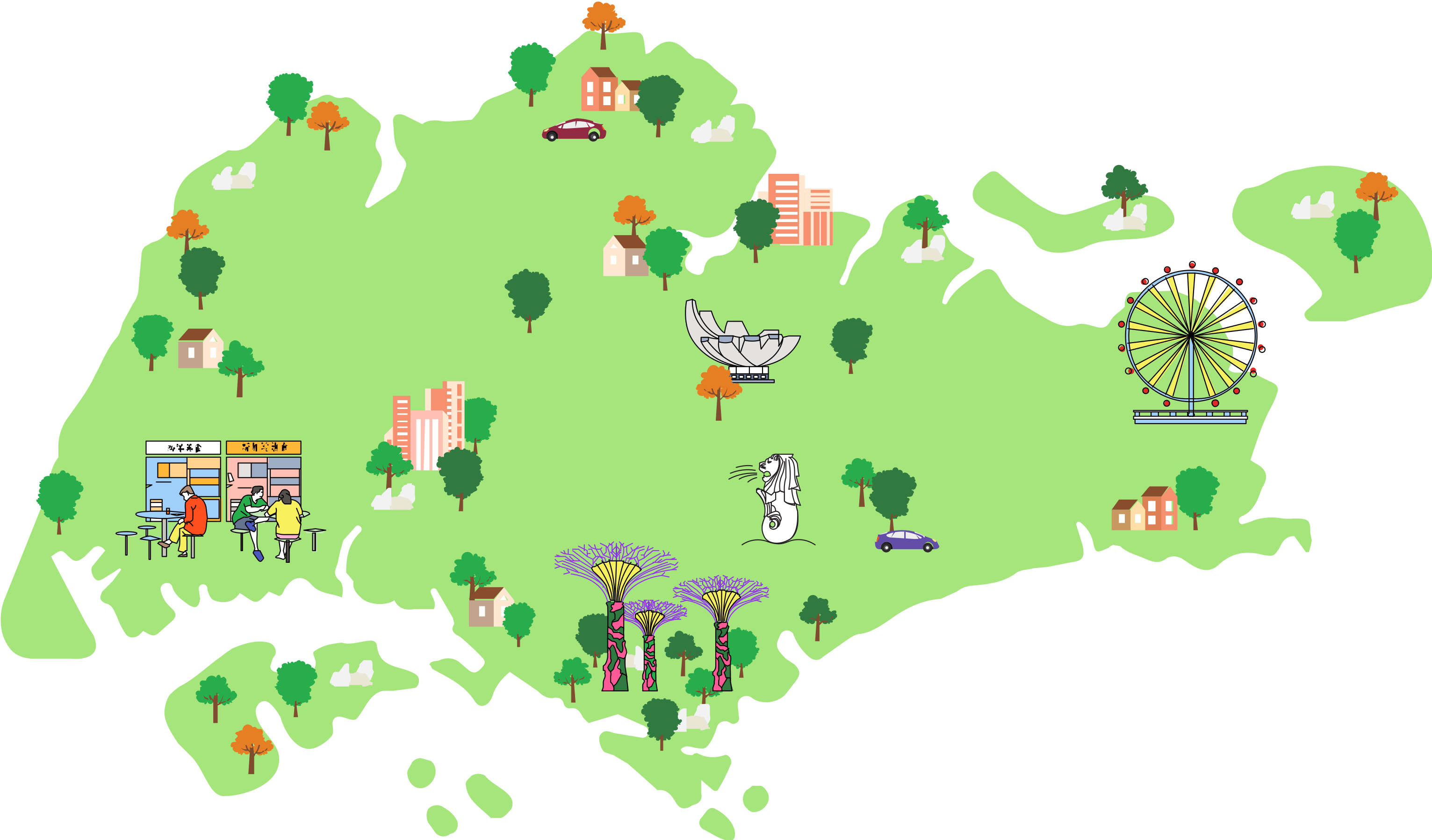14th Century Temasek
Before Singapore, before Singapura, was Temasek.
Early 19th Century Colonial Singapore
Late 19th Century Colonial Singapore
Present Day Singapore








The Origin of Chinese Singaporean Culture
Chinese Singaporean culture is vast! It includes our beliefs, arts, morals, customs and habits. To understand why it is the way it is, we need to jump back in time and see how we got to where we are today.
It was a little tropical island in the heart of Southeast Asia that overcame its lack of resources by trading in goods like cotton, lakawood and even hornbill casque.
It was a little tropical island in the heart of Southeast Asia that overcame its lack of resources by trading in goods like cotton, lakawood and even hornbill casque.
Wander its humid jungles and you would see familiar plants like pandan and coconut that have become key ingredients in our cuisine today.
Wander its humid jungles and you would see familiar plants like pandan and coconut that have become key ingredients in our cuisine today.
Speak to a villager and he would respond in Malay, the common language of the region.
Speak to a villager and he would respond in Malay, the common language of the region.
In fact, Malay would continue to be widely spoken during colonial Singapore and many early Chinese migrants would also speak it fluently, shaping how we converse today.
In fact, Malay would continue to be widely spoken during colonial Singapore and many early Chinese migrants would also speak it fluently, shaping how we converse today.
Now, you would also hear people talking in English. The British have colonised Singapore to gain a footing to trade in Southeast Asia.
Now, you would also hear people talking in English. The British have colonised Singapore to gain a footing to trade in Southeast Asia.
And they needed labour, lots and lots of cheap labour. The plan is to transform this island into a thriving port.
And they needed labour, lots and lots of cheap labour. The plan is to transform this island into a thriving port.
Sit by Singapore river and you will see many Chinese working as labourers at the port.
Sit by Singapore river and you will see many Chinese working as labourers at the port.
The Chinese from China’s southern coastal provinces saw demand for labour in Singapore as a chance to escape the economic and political turmoils in China and strive for a better life.
The Chinese from China’s southern coastal provinces saw demand for labour in Singapore as a chance to escape the economic and political turmoils in China and strive for a better life.
Take a walk and you would also encounter Chinese dressed in Western suits switching fluently between English, Malay and Hokkien.
Take a walk and you would also encounter Chinese dressed in Western suits switching fluently between English, Malay and Hokkien.
These are the Chinese who had settled in places in the region like Java and Malacca since the 12th century.
These are the Chinese who had settled in places in the region like Java and Malacca since the 12th century.
They saw a different opportunity in Singapore.
They saw a different opportunity in Singapore.
A chance to expand their business and act as middlemen between Singapore’s local communities and European merchants.
A chance to expand their business and act as middlemen between Singapore’s local communities and European merchants.
The plan worked! Singapore is now a thriving port. With international exposure and a diverse local population, it’s landscape is colourful and vibrant.
The plan worked! Singapore is now a thriving port. With international exposure and a diverse local population, it’s landscape is colourful and vibrant.
People of various cultures converse in a mix of Hokkien and Malay. Taking a stroll down Waterloo Street, you would even see buildings of various religions sharing the same street.
People of various cultures converse in a mix of Hokkien and Malay. Taking a stroll down Waterloo Street, you would even see buildings of various religions sharing the same street.
As you explore, you would have noted that five major Chinese dialect communities have settled in distinct districts and are dominant in specific trades.
MEET THEMAs you explore, you would have noted that five major Chinese dialect communities have settled in distinct districts and are dominant in specific trades.
MEET THEMYou would also see that many Chinese gathered at clan associations of the same dialect group, place of origin or even trade.
You would also see that many Chinese gathered at clan associations of the same dialect group, place of origin or even trade.
As the colonial government had little interest in the welfare of the locals, the Chinese created their own self-help clan associations to provide support to one another.
As the colonial government had little interest in the welfare of the locals, the Chinese created their own self-help clan associations to provide support to one another.
In the footsteps of Temasek and its colonial days, independent Singapore continues to overcome its limited resources by developing itself as a global hub with one of the best airports and maritime ports in the world.
In the footsteps of Temasek and its colonial days, independent Singapore continues to overcome its limited resources by developing itself as a global hub with one of the best airports and maritime ports in the world.
English is now the working language unifying its diverse population while connecting Singapore to the rest of the world.
English is now the working language unifying its diverse population while connecting Singapore to the rest of the world.
Meanwhile, citizens continue to preserve their own ethnic cultures and religions adding to the colours and flavours of the city-state.
Meanwhile, citizens continue to preserve their own ethnic cultures and religions adding to the colours and flavours of the city-state.
See how else our history shaped Chinese Singaporean culture today.
LEARN MORESee how else our history shaped Chinese Singaporean culture today.
LEARN MOREThat was a journey that spanned 700 years!
Did you notice that beneath all the twists and turns of history, there were always 3 ingredients that shaped Chinese Singaporean culture?
That was a journey that spanned 700 years!
Did you notice that beneath all the twists and turns of history, there were always 3 ingredients that shaped Chinese Singaporean culture?





You can think of these three ingredients as the “DNA” of Chinese Singaporean culture. Looking at how they influence one another will help you understand culture even as it continues to evolve.
Through generations, much of what the early Chinese migrants brought to Singapore has changed. However the values they held dear continue to be passed down.
You can think of these three ingredients as the “DNA” of Chinese Singaporean culture. Looking at how they influence one another will help you understand culture even as it continues to evolve.
Through generations, much of what the early Chinese migrants brought to Singapore has changed. However the values they held dear continue to be passed down.
CHAPTER 2